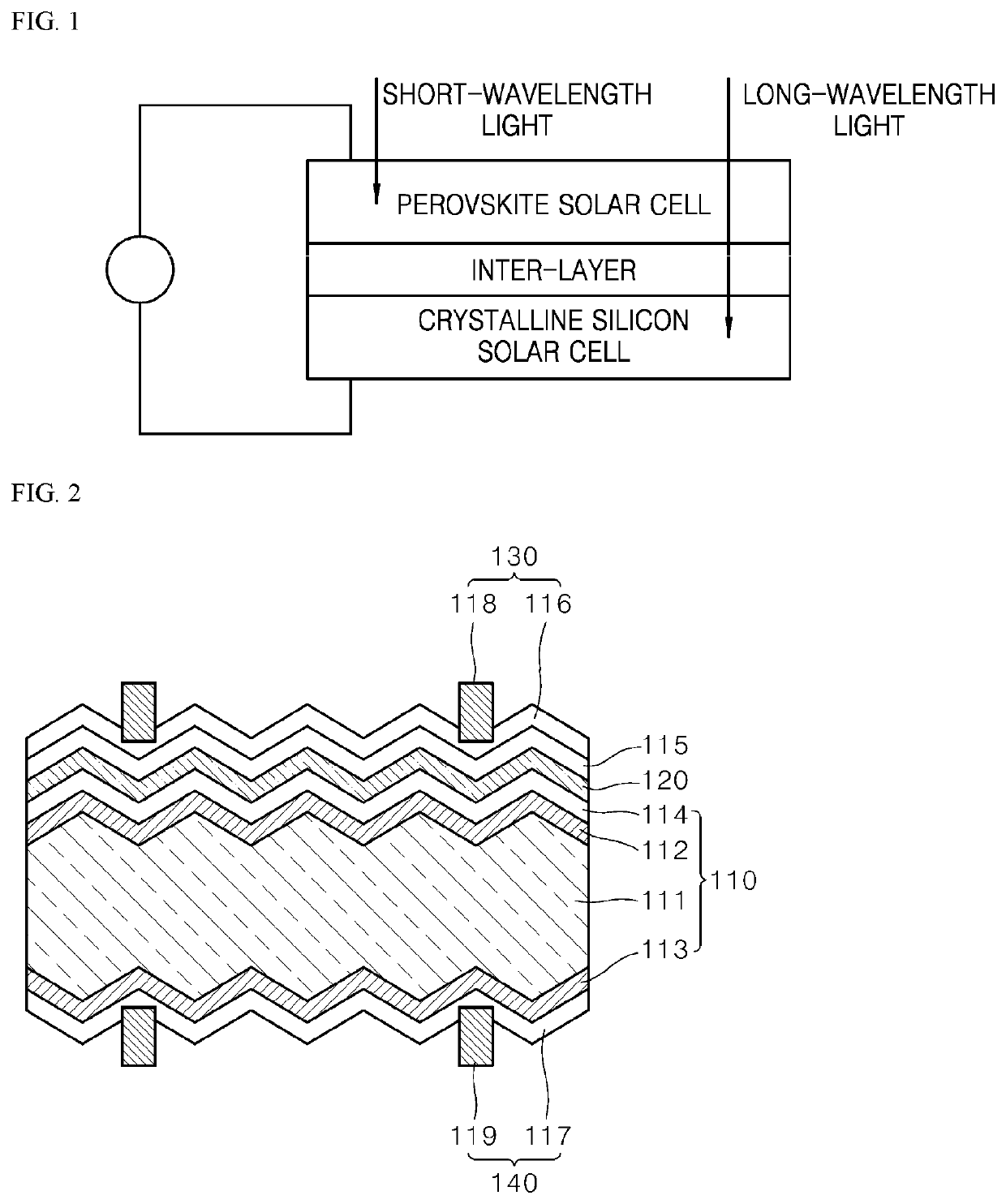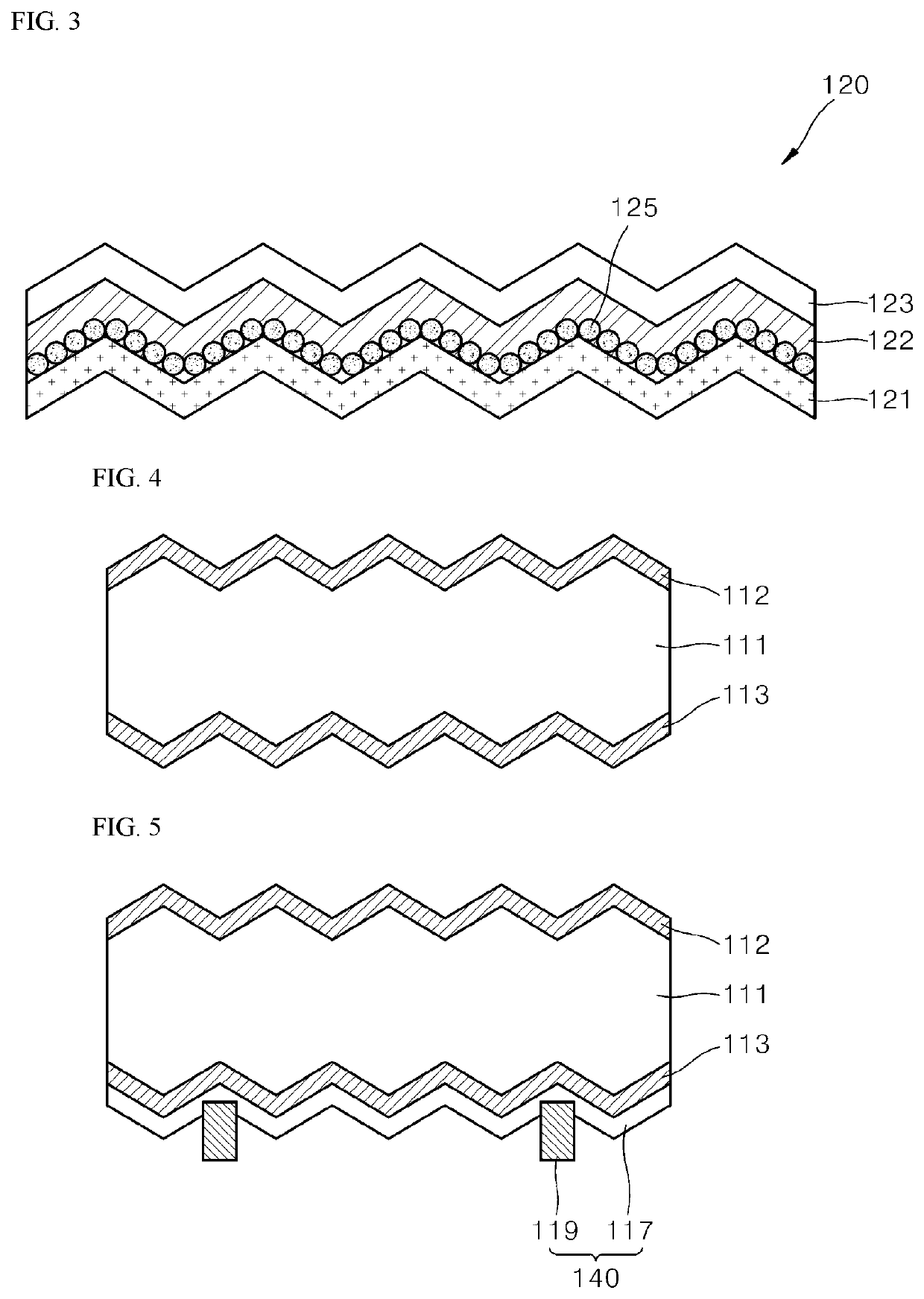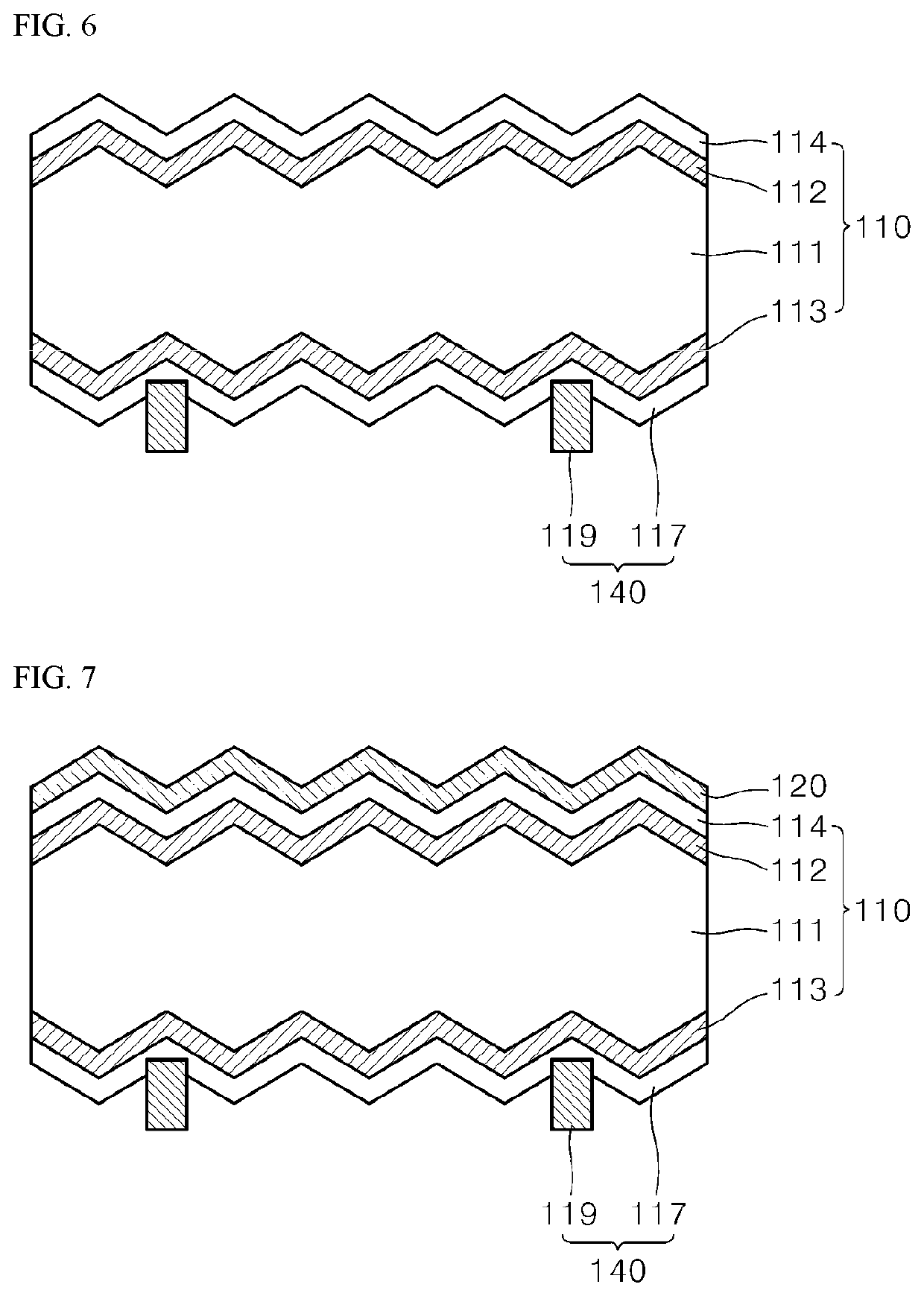Method for manufacturing perovskite silicon tandem solar cell
a tandem solar cell and perovskite technology, applied in the direction of sustainable manufacturing/processing, climate sustainability, semiconductor devices, etc., can solve the problems of reducing the light absorption rate of crystalline silicon tandem solar cells, textured structure of substrates that are not mirrored in the upper portion of perovskite absorption layer, and low photoelectric conversion efficiency of crystalline silicon solar cells. , to achieve the effect of improving the device properties, reducing the reflectance of light, and prolong the path of ligh
- Summary
- Abstract
- Description
- Claims
- Application Information
AI Technical Summary
Benefits of technology
Problems solved by technology
Method used
Image
Examples
Embodiment Construction
[0032]Hereinafter, a tandem solar cell and a method of manufacturing the same according to exemplary embodiments of the present disclosure will be described in detail with reference to the accompanying drawings.
[0033]However, the present disclosure is not limited to embodiments described below and may be implemented in a variety of different forms, and the embodiments are only provided to complete the disclosure of the invention and to fully inform the scope of the invention to those skilled in the art.
[0034]FIG. 2 is a cross-sectional view of a tandem solar cell according to one embodiment of the present disclosure, and FIG. 3 is a detailed cross-sectional view of the perovskite solar cell of FIG. 2.
[0035]Referring to FIGS. 2 and 3, a tandem solar cell 100 according to a first embodiment of the present disclosure has a structure of a two-terminal tandem solar cell in which a perovskite solar cell 120, as a second solar cell including an absorption layer having a relatively large ba...
PUM
| Property | Measurement | Unit |
|---|---|---|
| temperature | aaaaa | aaaaa |
| thickness | aaaaa | aaaaa |
| energy band gap | aaaaa | aaaaa |
Abstract
Description
Claims
Application Information
 Login to View More
Login to View More - R&D
- Intellectual Property
- Life Sciences
- Materials
- Tech Scout
- Unparalleled Data Quality
- Higher Quality Content
- 60% Fewer Hallucinations
Browse by: Latest US Patents, China's latest patents, Technical Efficacy Thesaurus, Application Domain, Technology Topic, Popular Technical Reports.
© 2025 PatSnap. All rights reserved.Legal|Privacy policy|Modern Slavery Act Transparency Statement|Sitemap|About US| Contact US: help@patsnap.com



